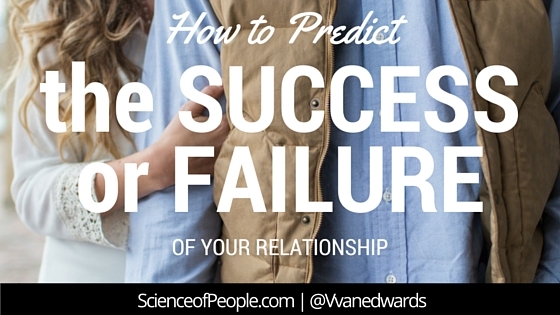Have you ever noticed you are dating the same kind of person over and over again?
This might not be your imagination or coincidence, it could be your:
Attachment Style: Our tendencies and patterns of how we connect to the people in our lives.
As humans, we connect to the people around us. We attach to parents, partners, kids and friends. Research has found that we typically have an attachment style -- we connect with people in the same pattern over and over again.
Our style of attachment can be a scary predictor of our relationship success. Our patterns of attachment are typically set in childhood and tend to follow us around wherever we go.
#1: Your Parents
I hate to say it, but your parents have a pretty big hand in how you relate to, pick and connect with your romantic partners. This all started with a fascinating experiment done in the 1960s by John Bowlby and Mary Ainsworth. Bowlby and Ainsworth put children and parents into what's called the "Strange Situation" test.
The Strange Situation:
Imagine that as a child you were put into a big room. Your mom comes in. Your mom does not participate in your exploration of the room. A stranger comes in the room, talks to your mom and then approaches you. Your mom quietly exits the room.
How do you react?
Finally your mom returns.
During this entire exercise, experimenters are observing these behaviors:
- How the child explores the room and plays with new toys throughout the experience
- What the child does when their parent disappears
- How the child reacts when alone with a stranger
- What the child does when the parent returns
Based on how the child reacts, they were placed into four different categories representing their 'attachment' to their parent. These are the 4 attachment styles. Researchers believe you keep these attachment styles throughout your life and repeat them with partners, kids and friends.
#2: Which Attachment Style Are You?
If you're reading this, you're probably an adult, and I probably can't accurately do the Strange Situation test with you. However, you can take a test to see what attachment style you are.
#3: The 4 Attachment Styles
Dr. Phillip Shaver and Dr. Cindy Hazan took the parent-child research and applied it to romantic relationships. Here is an explanation of each style and what percent of the population has it.
Secure Attachment (60%): Securely attached people tend to be less anxious and more satisfied with their relationships. The children who were securely attached were happy to explore and bring toys back to the parent. In other words, their parent was a kind of base they could explore around and come back to. Securely attached people have an easy time forming connections and have less doubt about the equality of the relationship. They also have an easier time reaching out for comfort.
Anxious Attachment (20%): People who anxiously attach tend to have more worry about their relationship. They are said to experience an 'emotional hunger' and are desperate for a fantasy type of love. Unlike securely attached couples, people with an anxious attachment tend to be desperate to form a fantasy bond of ideal love-even when this might not be possible or reciprocated. They tend to look for a partner who can rescue them or 'complete' them. Unfortunately their desperation can sometimes push away the exact person they want closeness with. When they are afraid of losing their partner, they can become clingy, possessive, paranoid or need constant attention.
Avoidant Attachment (20%): Avoidant attachers have a tendency to be emotionally distant from their partner. Avoidant attachers pride their independence and can see attachment as weakness. They like to process emotions on their own and don't like to share vulnerabilities with anyone else. Unfortunately, they tend to pull away when they need help most. They are not as attentive as their partners because they worry that they will become too co-dependent and this will take away their independence. They can also shut down emotionally in fights or close themselves off from feeling.
Fearful Attachment (less than 5%): This is also called 'disoriented' or 'disorganized' attachment. These children seemed to volley between desperately needing their parent and pushing them away. People with this kind of attachment live in an ambivalent mindset where they swing from being afraid of connection to overanalyzing the equality or depth of their relationships. They tend to get overwhelmed easily and have unpredictable moods. At one moment they can smother their partner and at the next they can disappear for a day or two without explanation.
#4: Earned Secure
You are not doomed to your attachment style. Awareness is the first (and most important) step. What are your patterns? Do you tend to pull away or smother? Being honest with yourself and your partner is crucial. Second, it's important to treat your relationship and develop your relationship as a secure base. Researchers say people who change their attachment style are forming an "earned secure attachment." This means:
- Avoiding rocking relationships. Frequent break-ups, fights or roller coaster emotions will destroy your chances at moving to a secure style.
- Believing in growth. There is no such thing as a perfect relationship or perfect partner. The more we can understand that we can grow into deeper and deeper love, the more energy we put into a relationship (instead of doubting it or dismissing it).
- Seeking secure partners. If you are looking for your ideal partner, it is important to think about how they attach. Anxious and Avoidant attachers can seek out secure attachers to become more secure themselves.
#5: The Secure Base
Your relationship can be a home base, a touch stone, a foundation for you. In the right relationship, you seek out a satisfying and a loving mutual connection. I found this study on attachment styles particularly interesting:
It's not that secure people don't need support, it's that they ask for it.
One study by Victor Florian found that secure people perceive higher levels of emotional and instrumental support from their partners. In other words, secure people actually seek out the support they need. They seek out:
- Emotional Support: Desiring comfort and care
- Instrumental Support: Seeking resources, help and problem-solving ideas
The question is: Do you seek support when you need it?
This can be an extremely easy way to start to 'seek' your emotionally secure base.
Remember, there is no judgment around attachment styles. Your style was set in motion in your early years and as an adult you learn to cope and build upon it. If you are secure, help the people around you to count on you. If you are anxious, avoidant or fearful, seek out your bases and tell them what you need.

